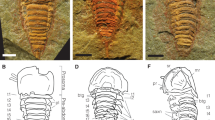Abstract
UNTIL Major Hans Schomburgk's search in 1911–12 for the headquarters of the pigmy hippopotamus (Choeropsis liberiensis), little was known of its distribution except that it hailed from the country to which it owes its specific name. Schomburgk found that it extended from the coastal belt of Liberia back to the boundary of French Sudan, but how far it spread along the coast into Sierra Leone and French Ivory Coast he could not discover (“Distribution and Habits of the Pigmy Hippopotamus”, in 17th Ann. Rep. New York Zoo. Soc., 1912 (pub. 1913), pp. 113–120). His farthest east record is from Du Queah (Dukwia) River, on the boundary between the Mamba and the Bassa Country, about 10° 15′ W. long.
This is a preview of subscription content, access via your institution
Access options
Subscribe to this journal
Receive 51 print issues and online access
$199.00 per year
only $3.90 per issue
Buy this article
- Purchase on Springer Link
- Instant access to full article PDF
Prices may be subject to local taxes which are calculated during checkout
Similar content being viewed by others
Author information
Authors and Affiliations
Rights and permissions
About this article
Cite this article
RITCHIE, J. Distribution of the Pigmy Hippopotamus. Nature 126, 204–205 (1930). https://doi.org/10.1038/126204c0
Issue Date:
DOI: https://doi.org/10.1038/126204c0
This article is cited by
-
Ecological diversity, community structure and conservation of Niger Delta mammals
Biodiversity and Conservation (2015)
Comments
By submitting a comment you agree to abide by our Terms and Community Guidelines. If you find something abusive or that does not comply with our terms or guidelines please flag it as inappropriate.



